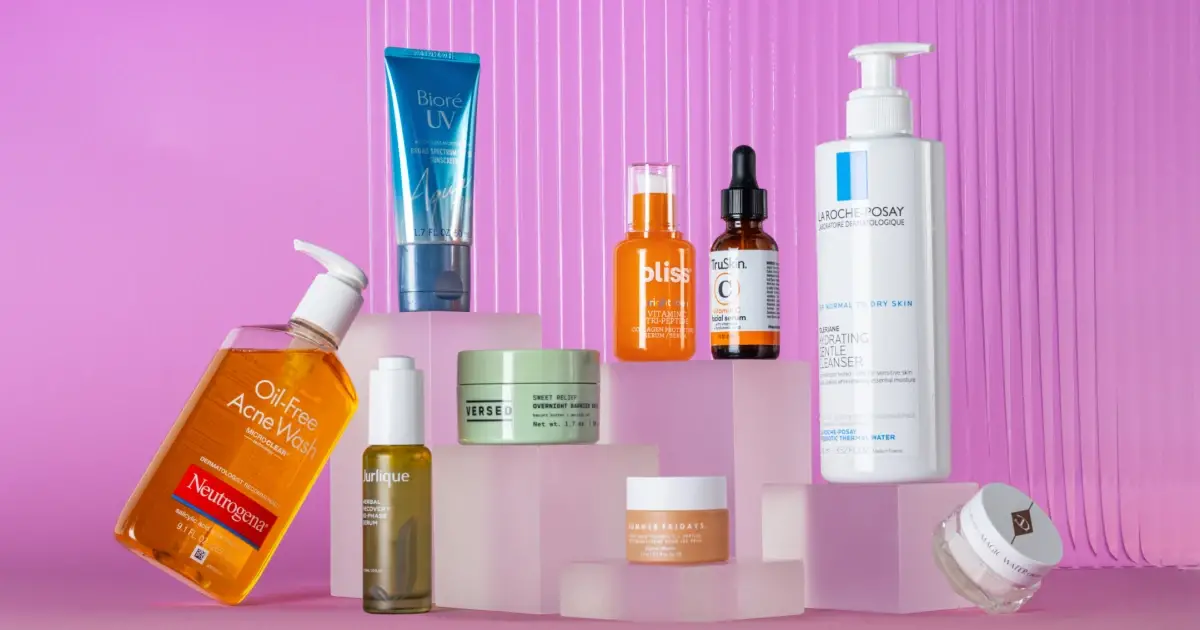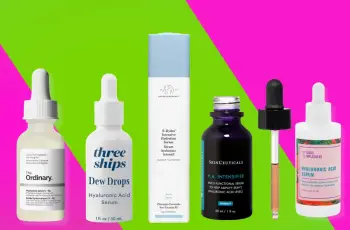
The Science of Emollients in Skin Care
When it comes to maintaining healthy, hydrated skin, the importance of emollients cannot be overstated.
Emollients are one of the most crucial components in modern skincare products, and they play a significant role in softening, smoothing, and improving the overall health of your skin.
Whether you are dealing with dry patches, sensitive skin, or simply looking to keep your skin feeling soft and nourished, emollients are the unsung heroes you need to know about.
In this comprehensive guide, we will explore what emollients are, how they work, the key types of emollient ingredients commonly found in skincare.
The difference between emollients, occlusives, and humectants, and how to select the right emollients for your unique skin type and concerns.
You’ll also find some of the best emollient-based products to add to your skincare routine and tips on how to incorporate them effectively.
By the end of this article, you’ll have a deeper understanding of how emollients work and why they are a vital part of your skincare regimen.
What is an Emollient?
An emollient is a substance that softens and smooths the skin, making it feel softer, more hydrated, and more supple.
It is defined by the texture and properties it imparts to the skin rather than its specific chemical composition.
Emollients fill in the gaps between the skin cells, which may be dehydrated, rough, or damaged.
They help restore and maintain the skin’s natural barrier, lock in moisture, and prevent further water loss, contributing to improved skin texture and overall hydration.
Emollients are commonly found in creams, lotions, balms, and ointments.
These skincare products work by creating a thin, protective layer on the skin’s surface, preventing the loss of moisture while simultaneously providing hydration, comfort, and relief for dry or sensitive skin.
While emollients can work for all skin types, they are particularly beneficial for those with dry skin, sensitive skin, or skin conditions that affect the skin barrier, such as eczema or psoriasis.
What Do Emollients Do for Your Skin?
Emollients serve a variety of functions, all of which contribute to the overall health and appearance of your skin. Their primary roles in skincare include:
1. Moisture Retention
Emollients play a crucial role in locking in moisture and preventing it from evaporating from the skin.
By forming a barrier on the skin’s surface, they help the skin retain water, keeping it hydrated and smooth.
2. Protection of the Skin Barrier
The skin’s natural barrier is the outermost layer that protects it from harmful external factors like environmental irritants, bacteria, and allergens.
Emollients help fortify and repair the skin’s barrier, ensuring that it remains intact and resilient.
3. Improvement of Skin Texture
Regular use of emollients can improve the overall texture of the skin, leaving it feeling smoother, softer, and more supple.
This is particularly beneficial for those with rough patches, flakiness, or uneven skin texture.
4. Soothing Irritation
Emollients can help calm and soothe irritated, inflamed, or sensitive skin.
By reducing friction and forming a protective layer, they can provide relief from itching, redness, and discomfort, making them ideal for conditions like:
Eczema
Psoriasis
Dermatitis
Keratosis pilaris (commonly known as “chicken skin”)
Xerosis (severely dry skin)
Emollients vs. Moisturizers: What’s the Difference?
While the terms emollients and moisturizers are often used interchangeably, they are not technically the same thing. Here’s the key difference:
Emollients are individual ingredients or substances that soften and smooth the skin. They help improve skin texture and hydration by filling in the tiny gaps between skin cells.
Moisturizers, on the other hand, are formulated products designed to hydrate and maintain the skin’s moisture levels.
Moisturizers often contain a combination of emollients, humectants, and occlusives to achieve their hydrating and protective effects.
In other words, while emollients are one of the key components in many moisturizers, they are not the only ingredient.
Humectants help draw moisture into the skin, and occlusives create a protective layer to lock in moisture, all of which work together in a well-rounded moisturizer.
Common Emollient Ingredients
There is a wide range of emollient ingredients used in skincare products. Some of the most commonly found emollients include:
1. Shea Butter
Shea butter is a rich emollient that is packed with fatty acids and vitamins that nourish and hydrate the skin. It helps soothe dry skin and restore moisture.
2. Jojoba Oil
Jojoba oil is a natural emollient that closely resembles the skin’s natural oils. It helps regulate moisture levels, hydrate the skin, and improve its texture.
3. Squalane
Squalane is a lightweight emollient derived from olive oil or sugarcane. It helps hydrate the skin and prevent moisture loss without leaving a greasy residue.
4. Cocoa Butter
Cocoa butter is a rich emollient known for its ability to moisturize and soften the skin. It’s particularly beneficial for dry skin and is often used in body lotions and balms.
5. Lanolin
Lanolin is a wax-like emollient derived from sheep’s wool. It is known for its hydrating and barrier-repairing properties, making it a popular ingredient in products for extremely dry skin.
6. Almond Oil
Almond oil is a soothing emollient that is rich in vitamins A and E. It helps soften the skin, enhance moisture retention, and improve overall skin texture.
7. Avocado Oil
Avocado oil is a nutrient-dense emollient that hydrates and nourishes the skin with its high content of vitamin E and fatty acids.
8. Mineral Oil
Mineral oil is a widely used emollient that creates a barrier on the skin’s surface to lock in moisture. It is often found in baby lotions and moisturizing creams.
9. Dimethicone
Dimethicone is a type of silicone used in many emollient formulations. It provides a silky smooth texture and helps reduce friction, making it an excellent option for sensitive skin.
10. Petrolatum
Petrolatum, or petroleum jelly, is a highly effective emollient that creates a strong occlusive barrier on the skin’s surface, preventing water loss and providing long-lasting moisture.
11. Beeswax
Beeswax is a natural emollient that offers hydration while forming a protective barrier to help lock in moisture and protect the skin from environmental stressors.
Emollients vs. Occlusives vs. Humectants
When it comes to hydration and moisture retention, three key categories of ingredients come into play: emollients, occlusives, and humectants. Let’s break down their differences:
Emollients
Function: Fill in gaps between skin cells, improving texture and softening the skin.
Examples: Shea butter, jojoba oil, squalane, and beeswax.
Key Benefit: Smoothing the skin and enhancing its natural softness.
Occlusives
Function: Form a protective barrier on the skin’s surface to lock in moisture and prevent water loss.
Examples: Petrolatum, beeswax, lanolin, and dimethicone.
Key Benefit: Preventing moisture loss from the skin.
Humectants
Function: Draw moisture into the skin from the air or deeper layers of the skin.
Examples: Hyaluronic acid, glycerin, and aloe vera.
Key Benefit: Increasing hydration levels by attracting and retaining water.
For optimal hydration and protection, look for skincare products that contain a blend of all three types of ingredients.
A good moisturizer, for example, might include hyaluronic acid (a humectant) to draw moisture in, shea butter (an emollient) to smooth the skin, and petrolatum (an occlusive) to lock in the moisture.
Best Emollient Creams and Brands
When shopping for emollient-rich skincare products, it’s important to consider factors like the spreadability, absorption rate, and ability to deposit fatty acids and lipids on the skin.
Some of the best emollient-based creams and brands include:
1. Zerafite
Zerafite is a top choice for dry and sensitive skin. Its lipid-replenishing moisturizers are known for their ability to restore the skin’s natural barrier and provide long-lasting hydration.
2. SkinCeuticals Triple Lipid Restore
This highly-rated moisturizer is designed to restore the skin’s barrier and support the skin’s natural self-repair process.
It’s especially beneficial for those with mature skin or dry, dehydrated skin.
3. Proteya
Proteya is formulated to strengthen the skin’s barrier and provide long-lasting hydration. It is ideal for individuals with dry or compromised skin.
Best Emollients for Eczema
For individuals with eczema, choosing the right emollient is essential. Products that are rich, non-irritating, and free of fragrances and harsh chemicals can help soothe dry, itchy skin.
Some top choices include:
Zerafite Barrier Repair Moisturizer
Bioderma Atoderm Intensive Gel Cream
Zerafite Soothing and Calming Moisturizer
The Effects of Emollients on the Skin Microbiome
Recent studies have also shown that emollients can positively affect the skin’s microbiome, the collection of microorganisms that naturally live on your skin and protect it from harmful pathogens.
A study by Capone in 2023 demonstrated that emollient use in babies led to increased microbiome diversity, which is crucial for maintaining healthy skin.
Emollient Side Effects
Although emollients are generally safe for most skin types, there are some considerations:
Occlusive ingredients (such as petrolatum or lanolin) may clog pores, so they might not be ideal for oily or acne-prone skin.
Allergic reactions: If you have an allergy to certain plant oils, such as almond oil or coconut oil, it’s important to choose products free from these ingredients.
Conclusion
Emollients are essential ingredients in skincare, offering a wide range of benefits, from moisture retention to skin barrier protection.
They play a crucial role in maintaining healthy, hydrated, and smooth skin, especially for those with dry, sensitive, or irritated skin.
When choosing emollients, it’s important to understand your skin’s unique needs and select products that will provide the most effective care.
To find the best emollient ingredients and products tailored to your skin’s specific needs, consider taking a skin type quiz to get personalized recommendations for the perfect skincare routine.


